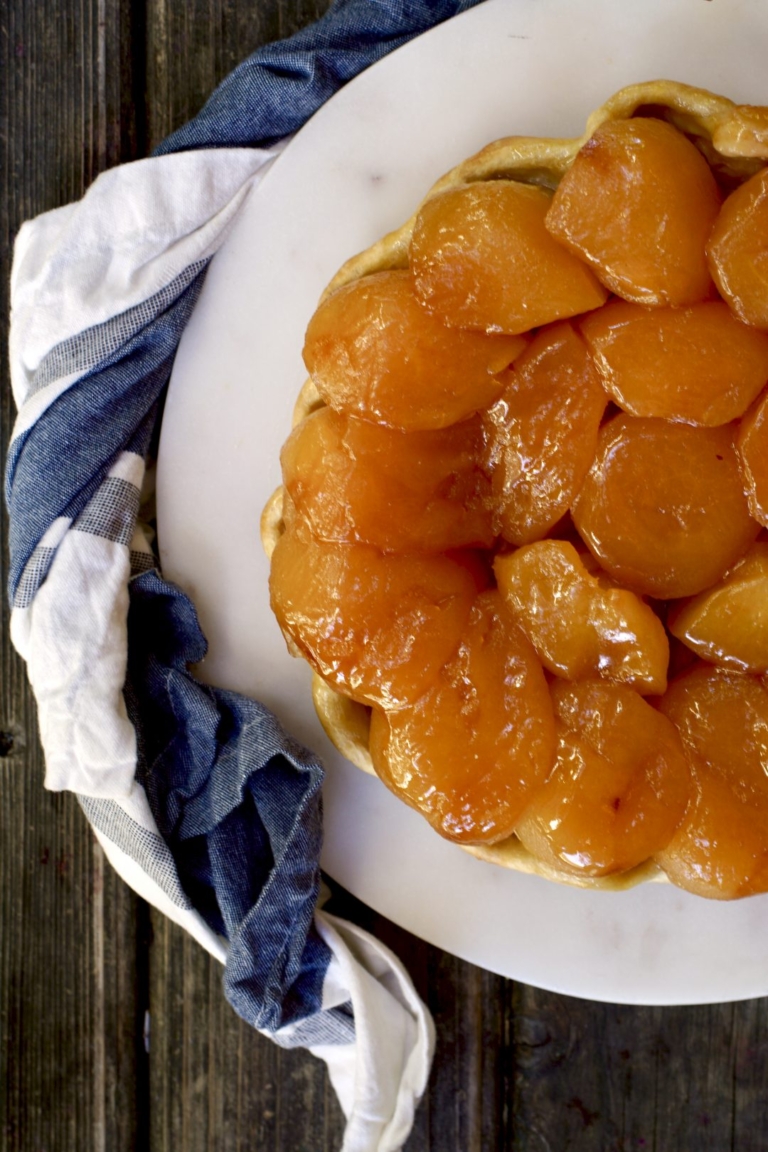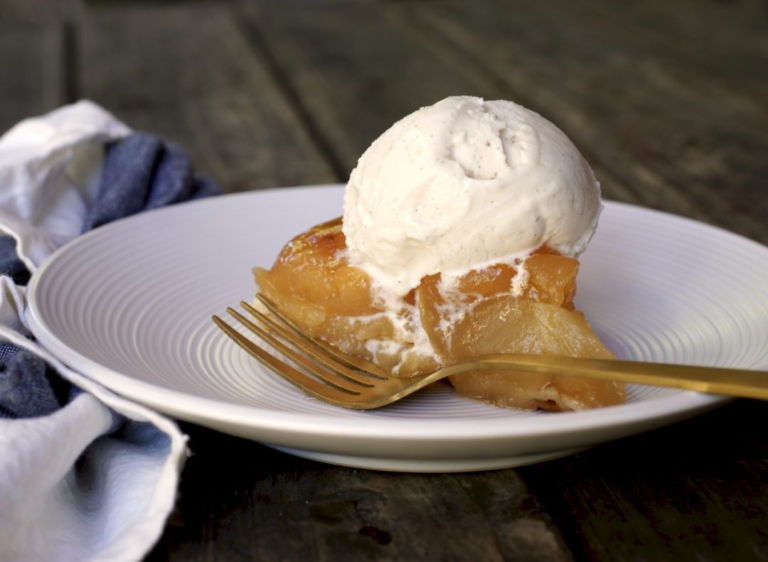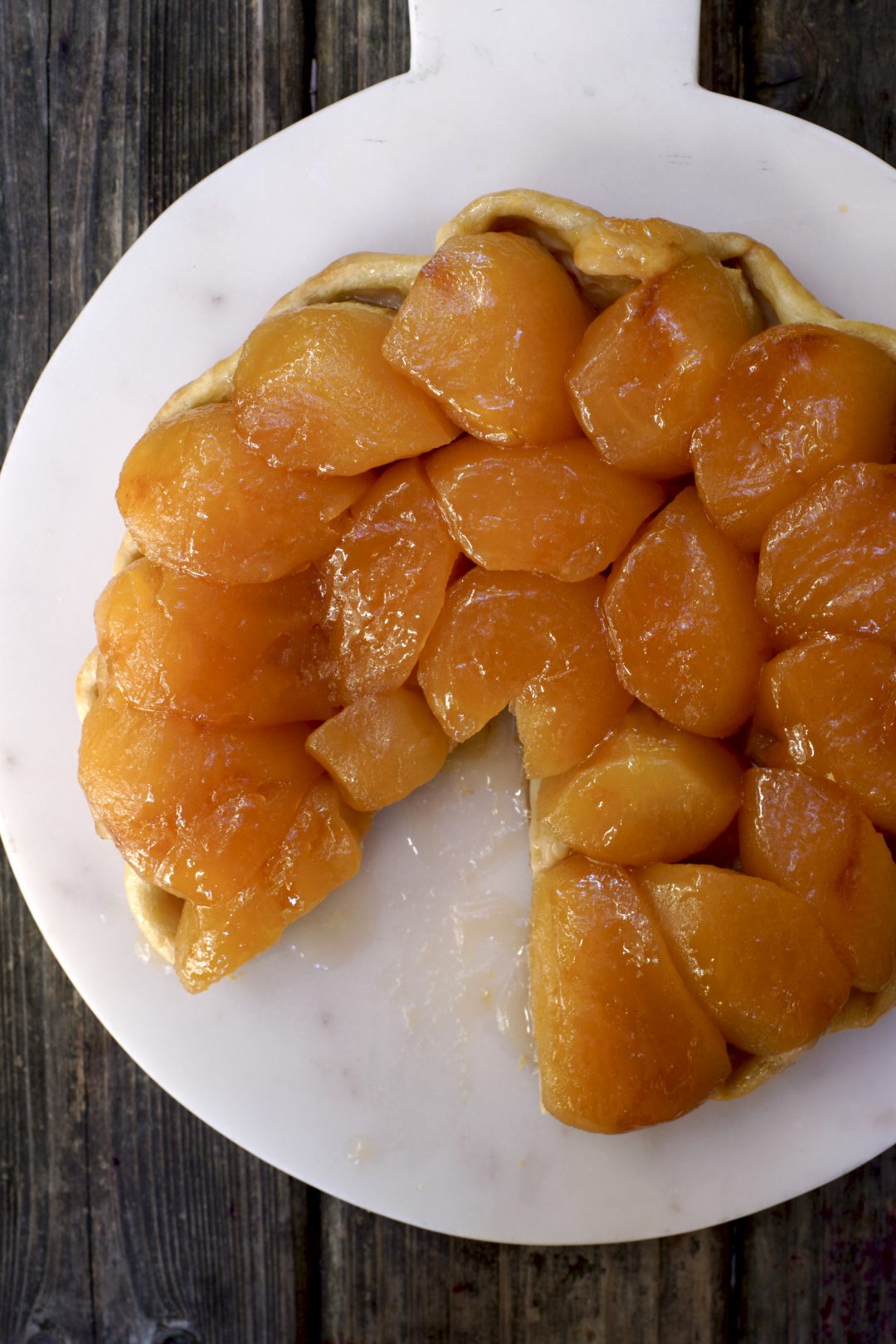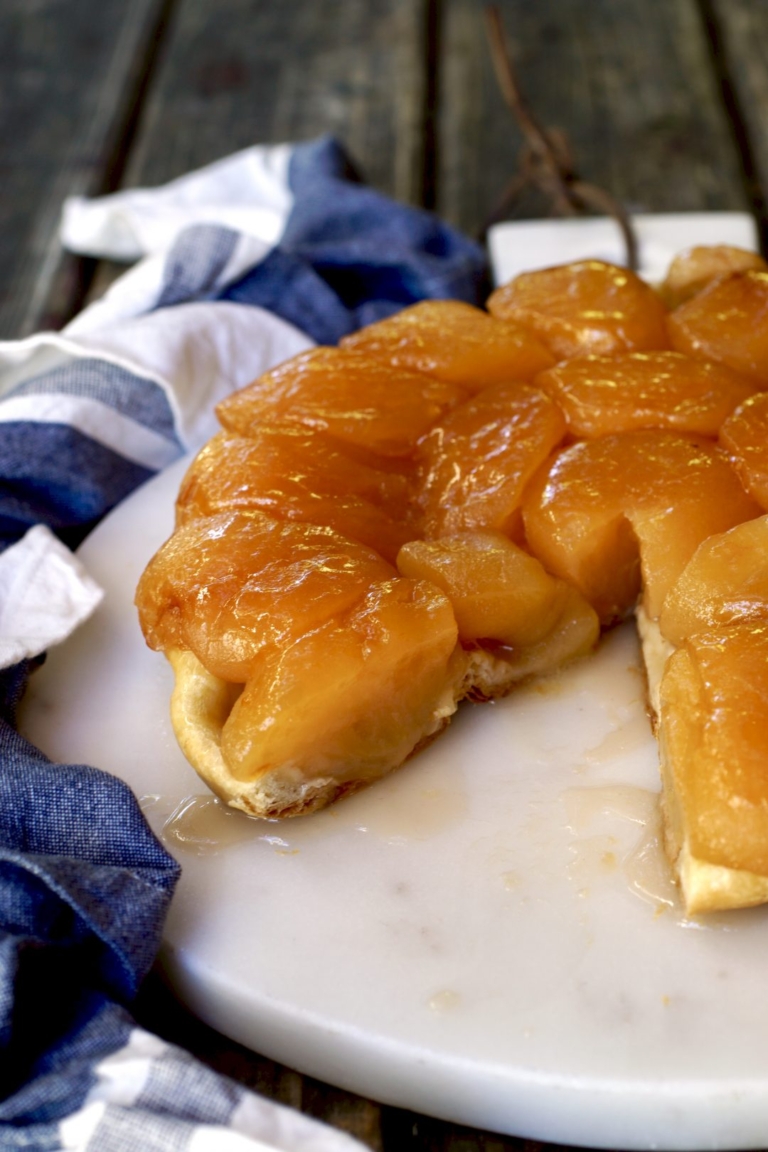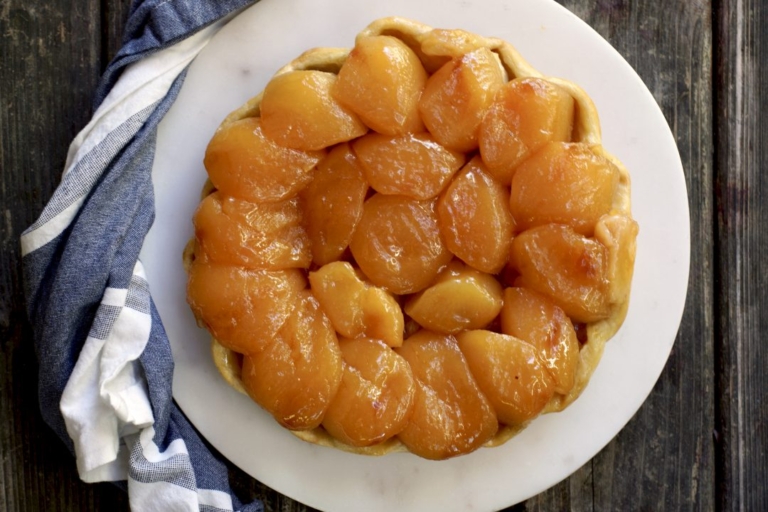Apple Tarte Tatin
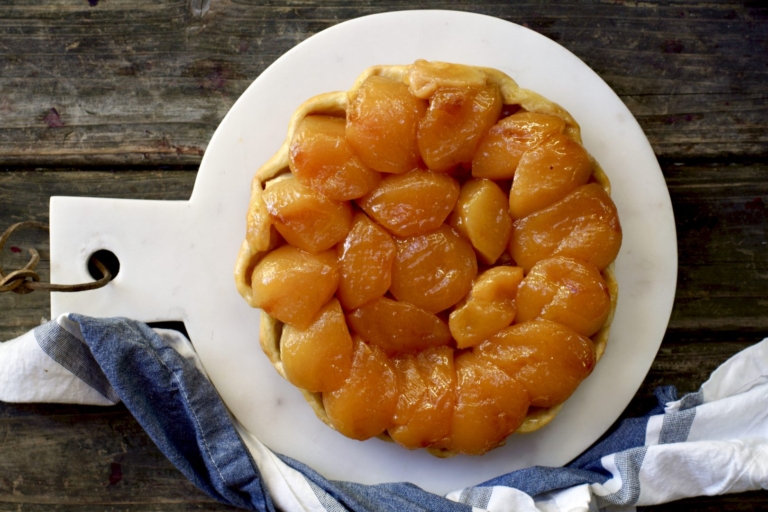
An apple tart tatin is a classic French dessert everyone should learn how to make. It is also the perfect easy dessert to make for any holiday meal. Considered a simply pastry where the fruit (most commonly apples) are caramelized in butter and sugar before the tart is baked. A tarte tatin is for the most part, an upside-down apple tart. And like many amazing things the food world, was created accidentally.
The general belief about the tarts origin is that this classic dish was actually created by mistake. In the late 19th century, sisters Stéphanie and Caroline Tatin ran the 14-room Hôtel Tatin in Lamotte-Beuvron, Loir-et-Cher, just outside of Paris, in a small village on the banks of the Sologne River.
One day, while making a traditional apple pie, Stéphanie, who ran the kitchen, overcooked the apples by mistake caramelizing them. Once she noticed, Stéphanie tried to save the dish by putting a pâte brisée pastry on top of the apple and placing the whole pan in the oven. Much to their surprise, the upside down tart was an instant hit with guests and a classic dessert was born.
Stéphanie and Caroline never actually named their invention “Tarte Tatin”, but instead referring to it as a “Tarte Solognote” due to the hotels proximity to the river. Food writer Curnonsky, nicknamed the prince of gastronomy, added “Tatin” and the rest they say is history. The hotel is now run by Caillé family and this elegantly rustic dessert remains on their menu to this day.
I learned how to make this classic dessert in culinary school when making your own puff pastry was required. And while I love, and encourage, any avid baker to partake in that endeavor, I also appreciate a good short cut, especially during a holiday. A good-quality store bough puff pasty does the trick nicely in this recipe turning this old favorite into a quick, almost effortless dessert everyone will love.
Apple Tarte Tatin
Ingredients:
- 6-8 Honeycrisp apples (or any apple of your choice)
- 6 tablespoons unsalted butter, softened
- 2/3 cup light brown sugar
- 1 sheet store bough puff pastry
Directions:
- Preheat the oven to 375 degrees F.
- The easiest way to prepare the apples for this dish is to slice the bottom off the apples to give it a nice flat base. Next, peel and quarter each apple. Using a paring knife, trim away the hard inner core areas removing any seeds in the process. I do not advise using an apple corer here. Set aside.
- Generously coat a 10-inch ovenproof skillet with the butter. Sprinkle evenly with sugar.
- Cut a piece of apple into a disk-like shape and place in the middle of the skillet as a center-point. Arrange the remaining apples pieces each standing up on the flat side, going in concentric circles around the apple centerpiece. The trick is to keep the apple pieces very closely together so they support each other and do not tip over when baking.
- On a lightly floured surface, roll out the puff pasty about 1/8-inch thick. Cut the puff pastry into a large circle that is the same size as the pan you are using. Place the puff pasty gently over the apples. Use your hands to tuck the pastry around the apples, hugging the together firmly.
- Place the skillet on the stove over medium to high heat and cook until you begin to see golden brown juices all around the edges, about 3-4 minutes. Continue to cook until the juices turn a darker golden-brown color with a caramelized aroma, about 8-10 minutes more.
- Remove the skillet from the heat and carefully place in the oven. Bake the tart for about 50 minutes, or until the puff pastry is browned and firm to the touch.
- Remove the tarte tatin from the oven and allow to cool for about 5 minutes. When ready to serve, place a large round serving plate or cutting board on top of the tart and carefully invert onto the plate. Serve with vanilla ice cream or homemade whipped cream. If serving the tart later, allow it to cool completely in the pan.
- Right before serving, simply reheat the tart in the skillet in a 350 degree F oven for about 10 minutes before turning onto a serving plate

